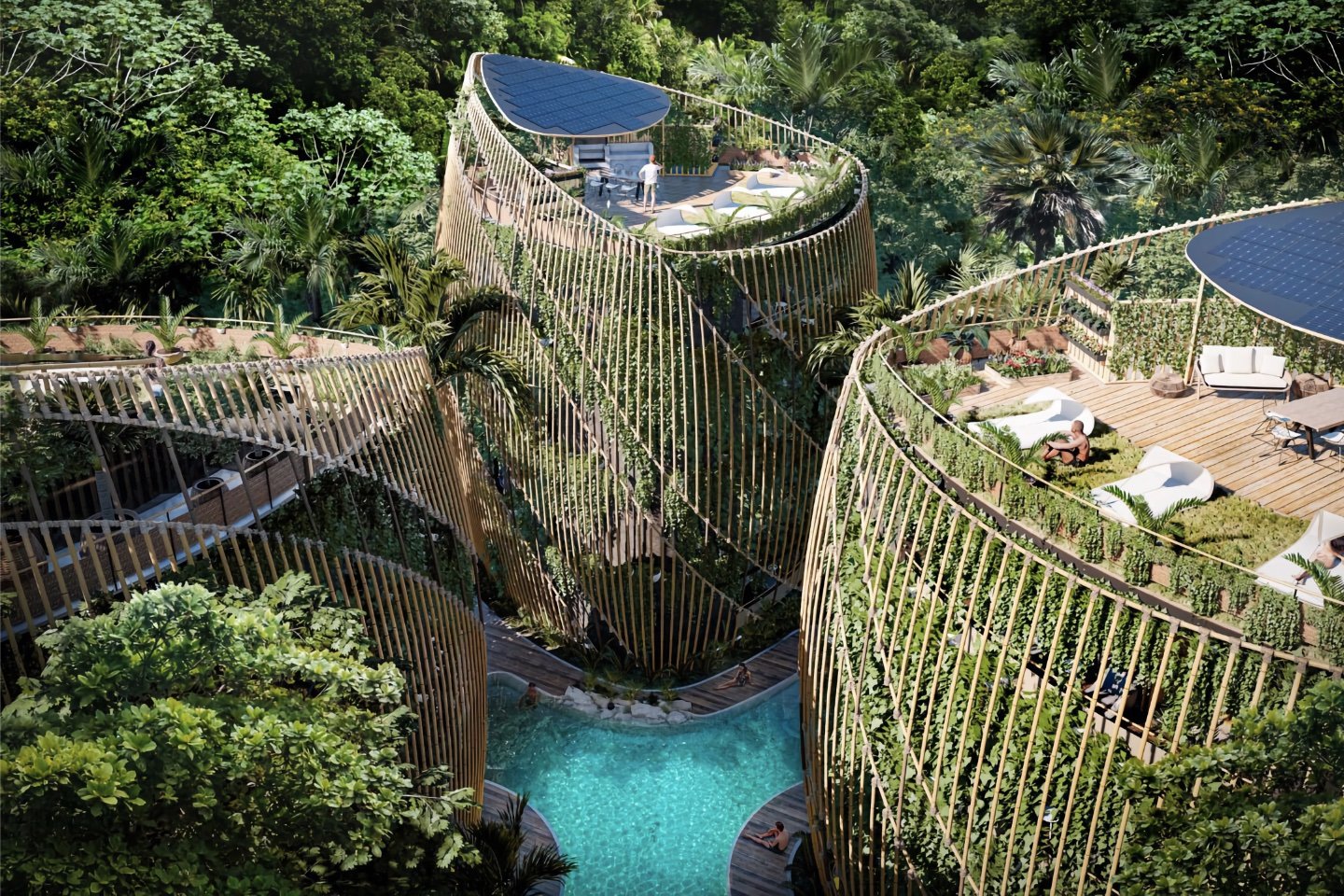Enhancing Environmental Responsibility Through Sustainable Architecture
By Tarkula Aduku
Facilitating enhanced air quality and wellbeing is a major strategy for large saving productivity that is capable of causing environmental healthiness and maintaining improved efficiency.
Artificial efforts have contributed in impacting greatly on global warming and climate due to rapid change increment in human population and overall increase in construction activities. All these have been responsible for the continuous exploitation of natural resources. With viable designs still ongoing, it is interesting to note that, India as a country is ranked 3rd in this regards. Records have it that, buildings certified by the IGBC (Indian Green Building Council) use 40-50 per cent less energy and 20-30 per cent less water. This sector is growing at a rate of 20 per cent each year.
This draws attention to the fact that, knowledge is highly responsible for the development of a country’s level of education and healthcare sectors. Approximately, the Indian education system is expected to reach a valuation of USD 225 billion by FY 2025. The subcontinent is at a crossroads in terms of providing leadership in education.
Better-quality architecture.
For a more purposeful design of public buildings, certain schemes must be considered even as cost has taken a toll recently, others to take into cognizance include, large savings, improved air quality, well-being and result in a healthier environment. A well sustained architecture relies on using moderation in resources while maintaining improved efficiency. Buildings made under sustainable architecture are called green buildings.
Green buildings are those built on the premise of the natural environment which operate with energy serving resources and its structures designed to connect with energy obtained from the sun, water and natural resources where energy-efficient systems enrich them with environmental friendliness.
Structural buildings when compared with classic structured buildings are found to produces less of waste materials and also emit greenhouse gases at lower proportions to make life healthier for people to live and work in. With the uprising environmental challenges, it has become critical for the implementation of a sustained architecture to create healthy living. Environmental standards such as LEED and BREEAM offer guidelines for sustainable building design which is important for environmental stability of planet earth.
Efficient Energy.
Efficient energy remains one of the most paramount features of sustainable architecture. This is because, green buildings save much energy because it uses energy-saving methods to be environmentally friendly and also produces a well-structured building.The structuring of green buildings is done carefully by taking into consideration even the smallest measures that utilizes energy; from preventing air leakages to using renewable sources.
Identified techniques for saving green building energy include installation of energy-efficient lights, streetlights with a timer feature, utilization of solar panels, etc. Additionally, green buildings use non-exhaustible resources such as hydroelectric and tidal power.
Uses renewable resources
It is found that, sustainable buildings use passive design and renewable energy to create environmentally friendly solutions. This contribute greatly in reducing the utilization of non-renewable materials by implementing a proper and moderate level of construction and engineering methods. The use of renewable energy helps to reduce construction waste by using effective recycling. Apart from this, the use of renewable resources helps in reducing the environmental impact by using recycled construction waste and engineering materials.
Environment-Friendly Solutions
A sustained architecture that is environmentally friendly helps the environment in many ways. It facilitates easy planning and takes into account climate, landscape, energy, and storm water management while eco-friendly systems and materials are used during construction. It is evident that, the materials used in building the structures reduce the environmental impact drastically, hence creating safer and healthy living. Several strategies can be used to implement environmentally-friendly solutions.
Glass Solution
Buildings made of glass have been found to give good impression of being environmentally friendly. This is because, the building is given a befitting, comfortable, modern look and maintains the environmental safety. Glasses on buildings optimizes light spread in the interior of the building and helps to reflect the heat waves, thereby providing a comfortable indoor life. This enables a cooler temperature inside the building and utilizes the brightness received from the sun. Apart from this, the glasses used reduces the use of lighting gadgets and artificial temperature as this glass enables the solution of using natural resources. Implementation of this glass solution helps in the reduction of electricity bills and also gives people a healthy space to live in.
Smart Bricks
Smart brick is 9a REB (Resource Efficient Brick). It is a combination of technology and sustainable construction. The idea of fast construction is achieved through this process, it saves a lot of time, this process is labor-friendly and does not require any sand or water in its structural process and the use of fewer resources, it provides the consumers with a quality structure.
Non- conventional sand
This sand it gotten from crushing hard granite stones which are widely available andbecause they are crushed, they reduce transportation costs to a great extent. These stones are found in conventional rivers and they give a stronger foundation to the building.
Environment efficient metals
Metals such as Aluminum produce high energy ranging from the process of production to transporting. However, the sustainable architecture uses the metal again and again by recycling or reusing the metal, hence saving a lot of energy. Due to recycling and reusing, the energy used by the metal decreases and makes the material sustainable. The materials that are created are water-resistant, long-lasting and do not need replacement.
Considerably, as green buildings are found to be contributing up to 7 per cent increase in asset value compared to non-green ones, they also contribute to general well-being with improved ventilation and better natural light. It is estimated that green buildings may remove the overall negative impact on the atmosphere by reducing up to 84 gigatons of CO2 emissions by the year 2050.





